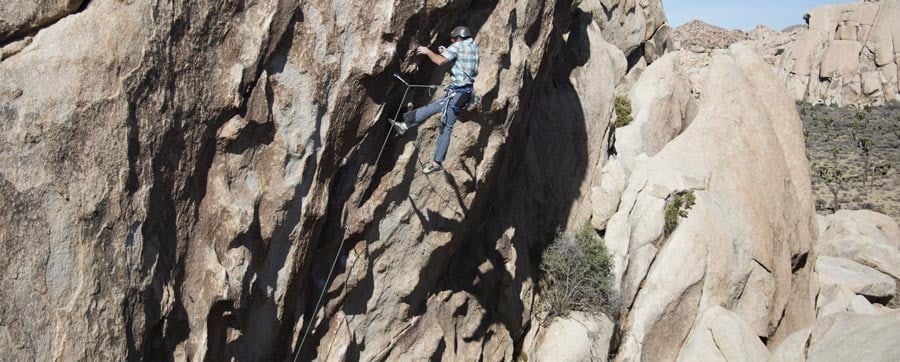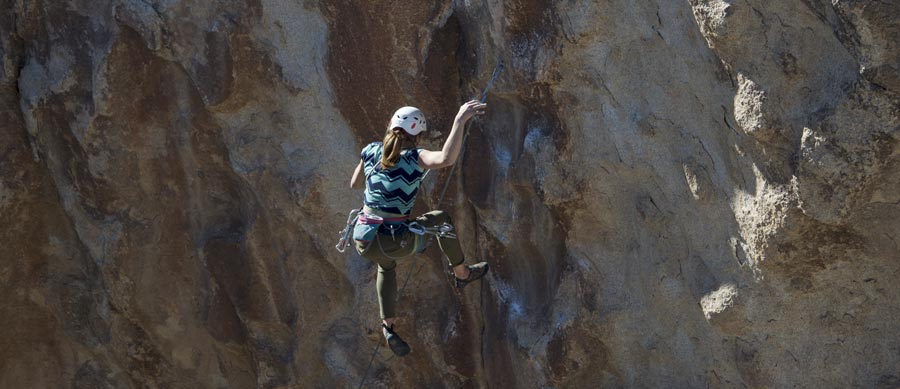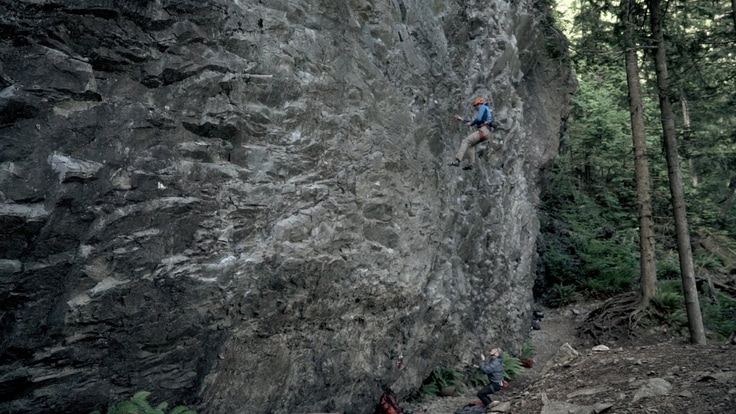When you progress from top-rope climbing to lead climbing, falls can drop you farther—up to twice as far as you've ascended above your last clip-in point. By learning how to fall, you help minimize your risk of injury.
Because falling is a natural byproduct of pushing yourself and learning new skills, managing the fear of falling is also key to progressing as a lead climber. By gaining a level of comfort with the experience, you free yourself to focus on the development of your skills rather than your primal fears.
Gear considerations: Because falling is always a possibility, no special gear is needed beyond your lead climbing gear. It's worth another look at your helmet, though, because a helmet that's dented, cracked or more than 10 years old needs to be replaced. Learn more about helmet choice in our Expert Advice article, Helmet: How to Choose.
Becoming more comfortable with falling breaks down into three phases:
- Knowing where to be in relation to the rope.
- Clearly communicating with your belayer.
- Achieving a clean flight path.
Keep an Eye on Your Rope
Tangling with your rope when you come off the wall leads to bad outcomes, especially if your leg catches and you flip upside down.
- Always keep the rope between you and the wall.
- If the rope runs off to one side, be sure it's closer to the wall than you are.
- If the rope has gotten behind any part of your leg, step out and over the rope again.
Communicate with Your Belayer

Though the belayer should watch your every move, two commands help the cause:
- Yell "Watch me!" if you're in a dicey place; it puts your belayer on high alert.
- Yell "Falling!" whenever gravity prevails; it helps your belayer react more quickly with the catch.
Strive for a Clean Flight Path
You can't control everything when the moment arrives, but concentrating on a few keys makes a huge difference. If you have a straight drop from an overhang, relax, exhale and try not to tense up because that makes the jolt more severe when you bottom out.
For most falls, follow these steps:
- Look down for any obstructions in your path.
- Don't push off unless it's to clear an obstruction—pushing off leads to a harder smack when the rope swings you, pendulum-style, back to the wall.
- Do keep your arms at chest level with elbows and knees bent slightly.
- Breathe out when you're airborne because it reflexively makes you relax.
- Don't grab anything on the way down—you risk severe finger trauma.
- Try for a soft landing with your feet, keeping your hands at the ready.
No-Fall Zones: When you're selecting a climbing route, look for no-fall zones. These are places where a fall would lead to serious consequences—where there's a nasty obstruction to hit, for example. Next be sure that the climbing difficulty through those zones is well within your ability. If that's not the case, then select another route.
Falling Practice

Practicing a severe fall is never recommended, but doing some short drops in a place where you have a bomber anchor can take the edge off your fear. You want to be at least 30 feet off the ground: high enough for rope stretch to absorb some of a fall's force. You must also be sure that you're high enough that you can't fall into the ground.
Mental Preparation
Often the mind gives in before you physically lose your grip. So strive for a healthy mindset before and during the climb:
- Make a plan before the climb: Decide your tactics for the crux and identify places where you can rest.
- Do your safety checks: You'll reduce risk and boost confidence.
- Trust your belayer.
- Breathe throughout the climb: You'll boost both physical and mental acuity.
Remember: Safety is your responsibility. No article or video can replace proper instruction and experience—this article is intended solely as supplemental information. Be sure you practice proper techniques and safety guidelines before you climb.


